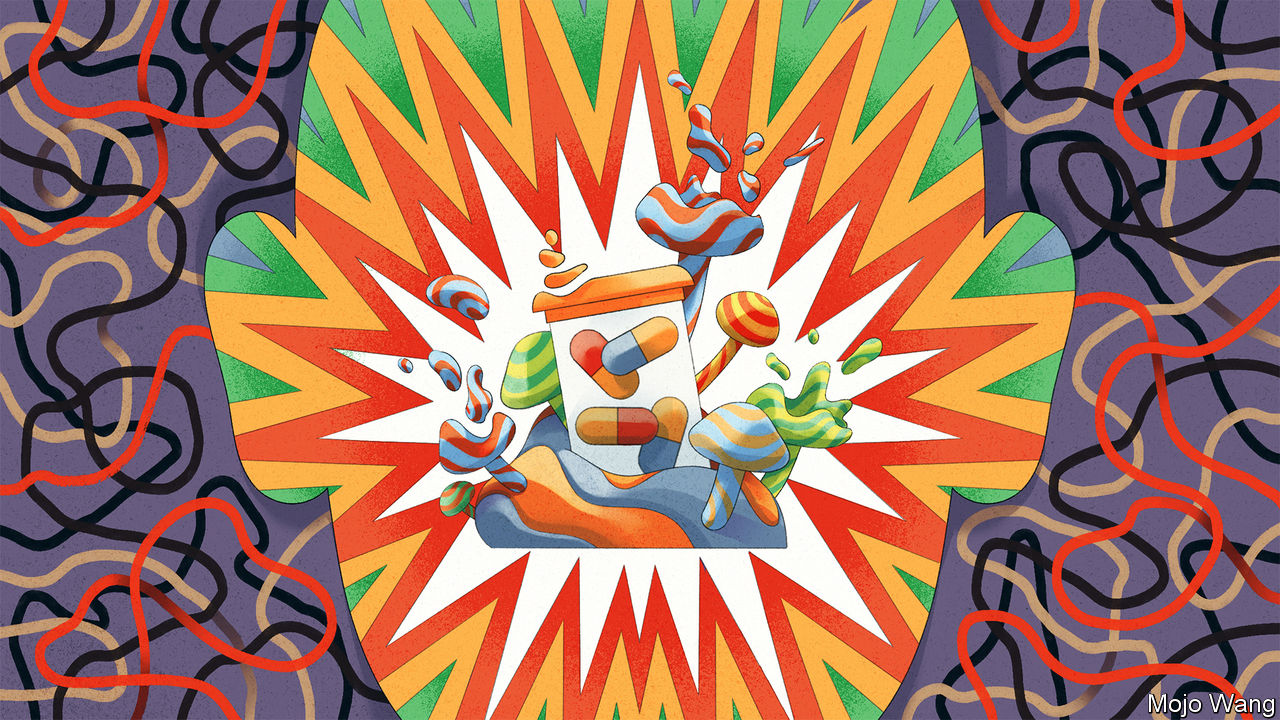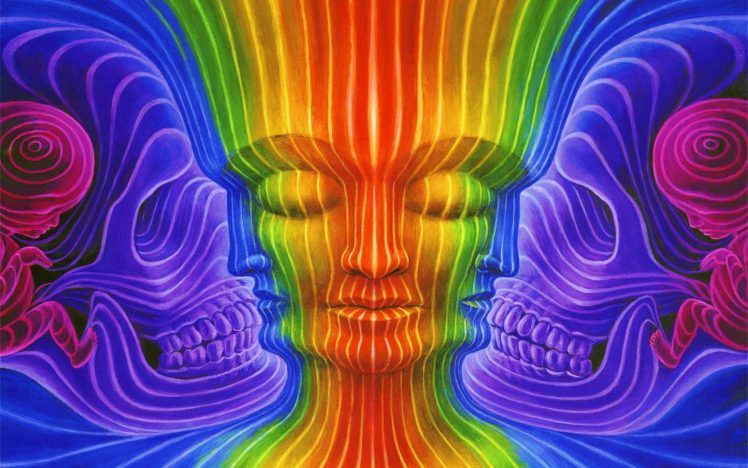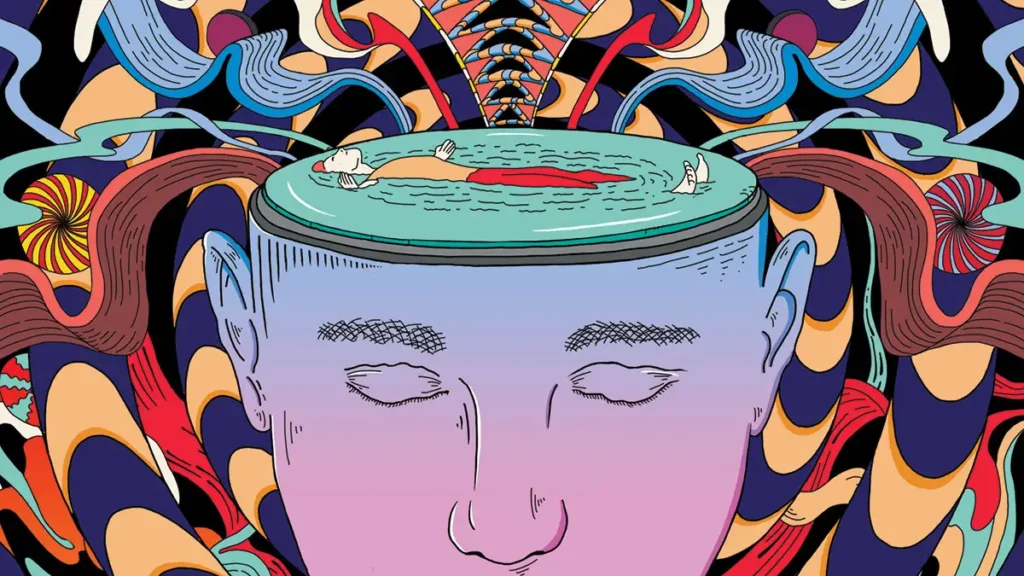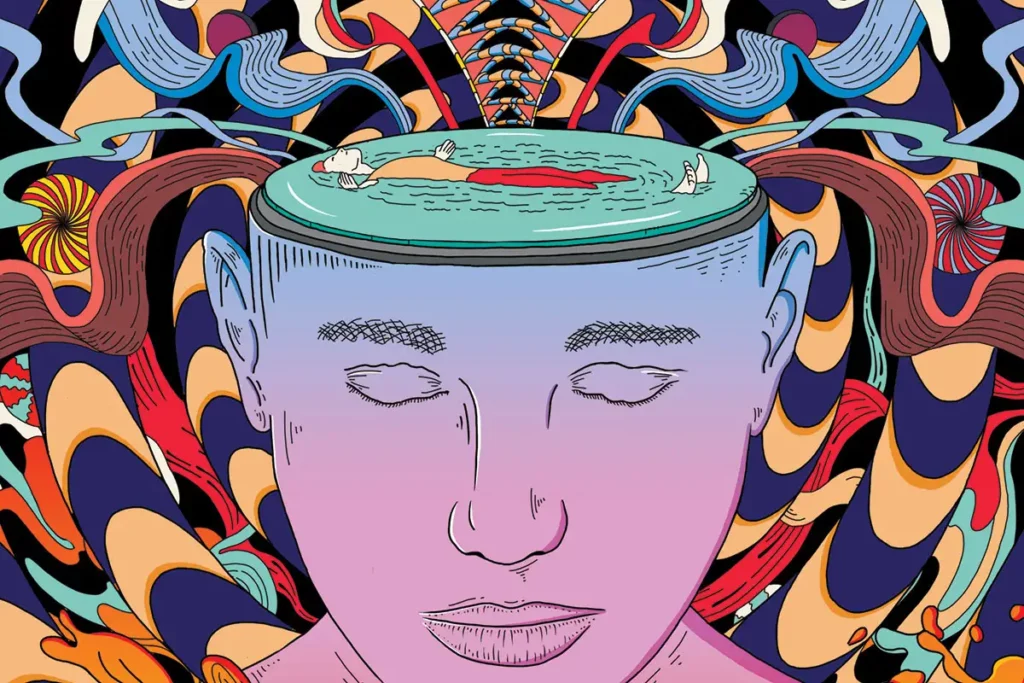
lllll
What Are Psychedelics?
Psychedelics (also known as hallucinogens) are a class of psychoactive substances that produce changes in perception, mood and cognitive processes.
Psychedelics are, to put it simply, substances that lead to a psychedelic experience. This is a unique altered state of consciousness that includes significant shifts in your emotions, perception, and thoughts. A psychedelic trip achieve these effects by mainly acting on the serotonin 5-HT2A receptors in the brain. However, these drugs act on other serotonin receptors, too, as well as the dopamine receptors.
Serotonin and dopamine are neurotransmitters in the brain that influence our emotions and how we perceive the world around us. By stimulating the receptors that release these chemicals, psychedelics often lead to radically different states of consciousness and sensory experiences.
Types Psychedelics

lol
CLASSICAL PSYCHEDELICS (SEROTONERGIC PSYCHEDELICS)
Classical psychedelics will be what most people think of when they hear the term “psychedelic”. Scientifically, they’re known as serotonergic substances, and while that term is less familiar, it offers insight into how they work. As you might guess, the term stems from the influence of classical psychedelics over our serotonin system. Many are naturally occurring (vines, mushrooms, and leaves), but there are a handful of synthetic variants as well.
Most psychonauts tend to start with classical psychedelics because they have a softer dose curve. The experience itself isn’t necessarily soft, though, as changes in perception, mood, and sensory experience ramp up with higher doses.
WELL-KNOWN CLASSICAL PSYCHEDELICS
PSILOCYBIN
Psilocybin mushrooms are one of the oldest known classical psychedelics, with a history spanning thousands of years and dozens of cultures. For that reason, when most people think of psychedelics, magic mushrooms are usually the first drug that comes to mind. It’s hardly surprising, though. A mere 1–2 grams of dried Psilocybe cubensis is enough to induce vivid changes to visual and auditory perception. When you then consider they grow all over the world, their popularity starts to make even more sense.
LSD
LSD (Lysergic acid diethylamide) is made from a substance found in ergot, which is a fungus that infects rye.
Unlike the other serotonergic drugs, LSD is exclusively synthetic—meaning it’s artificially produced in a lab. It was originally created by Albert Hofmann ,who didn’t realise what he’d done at first.
DMT
Want to venture on a psychonautic journey, but have a busy schedule? You’ll be in and out of your trip before you know it with DMT ( N,N-dimethyltryptamine ).
DMT encompassess all of the typical psychedelic effects, and provides out-of-body experiences at the right dose. What’s better, it’s all said and done in about 10–20 minutes (depending on the method of intake)!
Peyote (Lophophora williamsii)
is the most well-known and potent psychedelic cactus, although the smallest and slowest growing. Instead of growing upward to form a column, it grows as ‘buttons’ low to the ground. It has been used by Native Americans for over 5000 years.
THINGS TO CONSIDER WITH CLASSICAL PSYCHEDELICS
While classical psychedelics are united in their effects, individual experiences are influenced by dozens of factors. Remember, no two trips are the same, and it’s important not to underestimate the influence of serotonergics.
EFFECTS OF CLASSICAL PSYCHEDELICS

Serotonergics are unified by their effects. While specific ones differ in intensity, classical psychedelics typically generate changes in perception, mood, and the way we process information.
Common effects include:
- Distorted perception of time
- Alterations to vision (colour shifting, drifting, and visual flipping or stretching)
- Enhancement of mood, thought, and awareness
Given these effects, it’s clear to see why classical psychedelics are not just enjoyed by those seeking enlightenment, but by those wanting to increase their creativity, productivity, and sociability as well.
EMPATHOGENS
Relative to classical psychedelics, empathogens are less dramatic in effects. Visual and auditory changes are far milder, with a greater focus on emotional and social effects.
Empathogens have a strong reputation to increase sociability, friendliness, and, as their name implies, empathy. You may also see empathogens referred to as entactogens. The change in name merely removes negative connotations associated with the Greek root “pathos”, meaning suffering.
WELL-KNOWN EMPATHOGENS
We’ve discussed some already, but here’s a breakdown of the most well-known empathogens.
MDMA
MDMA is by far the most popular member of the empathogen category. The drug is also known as ecstasy, E, X, or molly. No matter the name, the effects are the same—heightened empathy. It is these intense feelings of sympathy, empathy, and mild visual distortion that make MDMA a popular choice.
Empathogens take a little while to kick in, but when they do, expect to feel the following:
- Euphoria
- Increased friendless and benevolence towards others
- Heightened sensitivity to emotional and visual stimuli
- The effects of empathogens usually start after 30–50 mins, reaching their peak after roughly two hours.
How are they used?
Psychedelics have been used since ancient times by various cultures throughout the world for their mystical and spiritual associations. LSD, magic mushrooms, Mescaline and DMT are usually swallowed, smoked or inhaled. Mushrooms are usually eaten fresh, cooked or brewed into a ‘tea’.
Generally, people who use psychedelics don’t take them on a regular basis, but on occasions that may be weeks or months apart.
Impact of mood and environment

jjjj
Psychedelics that affect a person’s mental state (psychoactive) can also have varied effects depending on a person’s mood (often called the ‘set’) or the environment they are in (the ‘setting’).
Set: a person’s state of mind, previous encounters with psychedelics , and expectations of what’s going to happen.
Setting: the environment in which someone consumes psychedelics – whether it’s known and familiar, who they’re with, if they’re indoors or outdoors, the type of music and light. For example, using psychedelics in a calm, quiet and relaxed environment can lead to, or contribute to, a pleasant experience.




